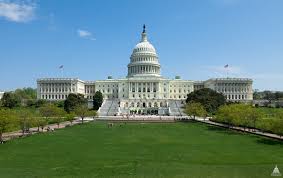January 13, 2017 | Howard Geller
On the eve of Donald Trump’s inauguration as 45th President, he has nominated Rex Tillerson as Secretary of State, Scott Pruitt as EPA Administrator, and Rick Perry as Energy Secretary. If the adage “personnel is policy” holds true, energy efficiency and clean energy will face a tough four years with respect to federal policy. While it’s too early to know what specific actions the Trump Administration will take, it’s reasonable to assume that the Clean Power Plan will fall by the wayside; use of a social cost of carbon emissions in policymaking will be eliminated; adoption of new federal appliance and equipment efficiency standards will slow down if not grind to a halt, and federal funding for energy efficiency and renewable energy R&D and deployment programs will be cut. These and other actions at the federal level will hurt our nation’s efforts to reduce energy waste and decarbonize the economy.
With the pullback in federal leadership, states and local governments will be left to pick up the slack. There are plenty of reasons for them to do so. Consider the following examples from the Southwest.
- Improving energy efficiency saves money. Energy efficiency remains our lowest cost energy resource. Energy efficiency programs implemented by electric utilities in the Southwest during 2008-15 are providing over $5 billion in net benefits for utilities and their customers.
- Improving energy efficiency supports a large number of jobs. A new analysis of energy efficiency employment finds that nearly 1.9 million people are employed nationwide in ways that increase energy efficiency, with 139,000 employed in the Southwest alone.
- Improving energy efficiency cuts air pollutant emissions, thereby enhancing public health. Along the Wasatch Front in Utah, where air pollution is a major concern, increasing energy efficiency in buildings and increasing adoption of electric vehicles are key strategies for improving regional air quality.
- Improving energy efficiency saves water, a precious resource in the arid Southwest. Strong energy efficiency programs implemented over the next decade in Arizona and Nevada alone could cut power plant water consumption by 6 billion gallons per year, enough water to serve 50,000 new households.
In addition, improving energy efficiency is a key strategy for reducing carbon dioxide and other greenhouse gas emissions. Without the United States making deep cuts in these emissions, the global effort to prevent catastrophic climate change will be extremely difficult. And given that we cannot expect leadership from Washington, at least for the next four years, a bottom-up strategy is essential. State and local governments, as well as businesses and individuals, must lead the way to deep cuts in greenhouse gas emissions.
What should state and local governments do to maximize energy efficiency and the benefits listed above? The list of effective state and local policies for helping households and businesses save energy is long, but here are eight priorities that I suggest:
- Scale up electric utility energy efficiency programs to where they save at least 2% of electricity sales each year — a level already achieved by leading electric utilities nationwide including the Salt River Project in Arizona.
- Scale up gas utility energy efficiency programs to where they save at least 1% of gas sales each year — a level already achieved by leading gas utilities. Questar Gas Company in Utah is close to achieving this goal.
- Adopt the 2015 International Energy Conservation Code (IECC), the state-of-the-art model energy code for new buildings, train builders and contractors on how to meet the code in a cost-effective manner, and ensure a high degree of code compliance.
- Provide financial incentives and other support for new buildings and factories that go well beyond minimum energy efficiency requirements and also rely on renewable energy produced either on-site or off-site, thereby contributing no net greenhouse gas emissions.
- Adopt benchmarking, disclosure and energy efficiency performance requirements for existing buildings.
- Continue to upgrade energy efficiency in public buildings and facilities including street lighting, and use some of the utility bill savings to acquire 100% renewable electricity following the example set by Las Vegas.
- Adopt the California Clean Car standards so that new vehicle fuel economy continues to rapidly improve in case the Trump Administration rolls back the federal standards.
- Promote electric vehicle adoption and invest in electric vehicle (EV) public charging infrastructure so that EV owners are able to recharge at work, at home and during longer trips. A transition to EVs is critical for decarbonizing personal transportation.
In the Southwest, we have demonstrated that increasing energy efficiency is not a partisan issue. Both Republican and Democratic governors have embraced energy efficiency as a key economic development and environmental protection strategy. Utility regulators in both red and blue states have supported robust utility energy efficiency programs, exemplified by Arizona adopting some of the strongest utility energy efficiency standards in the nation. In light of the anticipated federal pullback, states and localities in the Southwest should double down on energy efficiency.
Howard Geller is the Executive Director of SWEEP, a public interest venture he founded in 2001. Howard also leads SWEEP’s work on utility energy efficiency policy and programs.



